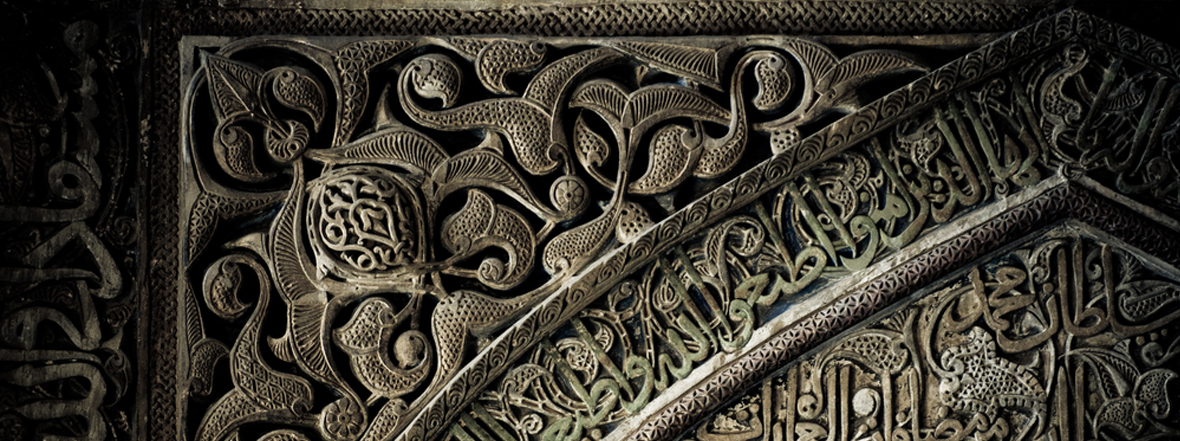بسم الله الرحمن الرحيم
Some common questions of students going into Bukhari year (final year of the Nizami curriculum) are: How should I prepare? Which commentaries should I invest in? Which books should I refer to for further reading and research? Below is my humble attempt at listing a few tips that came to mind. By no means is this list meant to be exhaustive, nor do I claim that what I have mentioned are the most effective pieces of advice, but I pray it helps in guiding the minds of students going into — or are currently studying in — the Bukhari year.
1. Understand the objective of your studies: which is to learn, practise and spread the ʿilm; to inculcate the love of the Messenger of Allāh Muḥammad (ṣal Allāhu ʿalayhī wa-sallam), and emulate him and his companions; to build a strong ability (istiʿdād) to then be able to open up many doors of self-study and research in the future.
2. Buy muḥaqqaq and revised prints of the Kutub as-Sittah. Some prints have some inaccuracies and narrations missing.
3. Invest in at least one comprehensive commentary for each book. Make a firm effort throughout the year to read at least half of each. Below are some options:
- Ṣaḥīḥ al-Bukhārī: Fatḥ al-Bārī Sharh Ṣaḥīḥ al-Bukhārī, by Hāfiẓ Ibn Ḥajar al-ʿAsqalānī. This is the best and most renowned commentary of Ṣaḥīḥ Al-Bukhārī. It has been published by ar-Risālah al- ʿĀlamiyyah in 26 volumes and by several other publishers.
- ʿUmdat al-Qārī Sharḥ Ṣaḥīḥ al-Bukhārī, by Abū Muḥammad Maḥmūd ibn Aḥmad Badr ad- Dīn al-ʿAynī (d.855 AH). A good print is the Dār al-ʿĀlamiyyah one that comes in 20 volumes with the taḥqīq of Muḥammad Naṣr Abū Jabal, and the best print is Idārat aṭ-Ṭabāʿah al-Munīriyyah that comes in 25 volumes.
- Ṣaḥīḥ Muslim: Al-Minhāj fi Sharḥ Ṣaḥīḥ Muslim ibn al-Ḥajjāj, by Imām Yaḥyā ibn Sharaf an-Nawawī (d.676 AH). He has incorporated most of Qāḍī ʿIyād’s commentary. It is one of the most comprehensive, precise, and excellent commentaries of Ṣaḥīḥ Muslim. In 2020, Dār al-Minhāj al-Qawīm published the book in 15 volumes with the taḥqīq of Māzin ibn Muḥammad as-Sirsāwī. They compared it to 30 previous manuscripts, and Dr. Bashshār ʿAwwād Maʿrūf and Dr. Ibrāhīm al-Lāḥim both praised the book in the introduction.
- Fatḥ al-Mulhim bi Sharḥ Ṣaḥīḥ al-Imām Muslim, by ʿAllāmah Shabbīr Aḥmad ʿUthmānī (d. 1369 AH). The introduction to the commentary is beneficial to help one get acquainted with the sciences of ḥadīth.
- Sunan an-Nasāʾī: Dhakhirat al-ʿUqba fī Sharḥ al-Mujtabā by Shaykh Muḥammad al-Ithyūbī which has been published in 42 volumes, the Ḥāshiyah of Imām Suyūṭī, the Ḥāshiyah of ʿAllāmah Sindī (some editions of the Sunan have both of these Ḥāshiyahs printed with it).
- Another more affordable option is al-Fayḍ as-Samāʾī ʿalā Sunan an-Nasāʾī by Mawlānā Rashīd Aḥmad Gangohī (d. 1323 AH), with additions from Shaykh al-Ḥadīth Mawlānā Muḥammad Zakariyyā Kāndhlawī (d. 1402 AH). It is published by Maktabah Khalīliyyah, Saharanpūr in three volumes with some footnotes by Shaykh al-Ḥadīth Mawlānā Muḥammad ʿĀqil (b. 1356 AH).
- Sunan Abī Dāwūd: Badhl al-Majhūd fī Ḥalli Sunan Abī Dāwūd, of Shaykh Khalīl Aḥmad Sahāranpūrī (d. 1346 AH). It is published by Dār al-Bashāʾir al-Islāmiyyah with the annotations of Mawlānā Zakariyyā Kandhlawī and taḥqīq (research) of Dr. Taqī ad-Dīn an-Nadwī in 14 volumes and it is simply a work of sheer genius and the most recommended commentary of the Sunan.
- Jāmiʿ at-Tirmidhī: Maʿārif as-Sunan, by Shaykh Muḥammad ibn Yūsuf al-Binnūrī (d.1397 AH). This is one of the best commentaries of the Jāmiʿ as it includes the proofs of the Ḥanafī madhhab for all the issues in which there is a difference of opinion among the schools of thought. The author reached the end of the Chapter of Ḥajj and passed away before completing it. It is published by HM Saʿīd Karachi in 6 volumes and is available online.
- Al-Kawkab ad-Durrī Sharḥ Jāmiʿ at-Tirmidhī, by Mawlānā Rashīd Aḥmad al-Gangohī (d.1323 AH). It is published by Lajnat al-ʿUlamāʾ Lucknow with the taḥqīq and footnotes of Mawlānā Zakariyyā Kāndhlawī in 4 volumes and is available online. Arwiqah publishers have also published it with the Jāmiʿ in 9 volumes.
- Sunan Ibn Majah: Murshid dhawi ‘l-Ḥijāʾ wa ‘l-Ḥājah ilā Sunan Ibn Mājah, by Shaykh Muḥummad al-Amīn ibn ʿAbdillāh al-Ithyūbī al-Hararī. It is published by Dār al-Manhāj in 26 volumes, making it the most comprehensive commentary on Sunan Ibn Mājah.
- Al-Iʿlām bi Sunnatihi ʿalayhi ‘ṣ-Ṣalāt wa ‘s-Salām Sharḥ Sunan Ibn Mājah, by al-Ḥāfiẓ ʿAlāʾ ad-Dīn Mughulṭāʾī Ibn Qalīj, (d. 762 AH). It is published by Dār Ibn ʿAbbās with the taḥqīq of Aḥmad ibn Ibrāhīm ibn Abī al-ʿAynayn in 5 volumes.
4. Ensure you know your naḥw/ṣarf rules, their application, and Arabic in general, otherwise; refresh your knowledge.
5. Get into a healthy productive schedule: this should include a sufficient amount of sleep, short naps, healthy eating, etc.
6. Remove all unhealthy habits and destructive practices you may have as they will be detrimental to your studies, and spiritual life such as wasting time, being proactive on social media, and engaging in sinful acts.
7. Muṭālaʿah & Takrār: are the backbones of one’s academic ability. Most graduates, in hindsight, will attest to this.
8. Read at least brief biographies of all the authors of the Kutub as-Sittah beforehand. The ’Silsilat Aʿlām al-Muslimīn’ series in Arabic is a good option.
9. Read at least a brief introduction to the methodology of the authors in their compilations. Some beneficial books for this, and other topics, which are also worth investing in, are:
English
- Introduction to Sunan Abī Dāwūd by Shaykh Sayyid Muḥammad ʿAqīl.
- An introduction to Ṣaḥīḥ al-Bukhārī by Shaykh Muṣṭafā al-Aʿzamī.
- When Less is More by Shaykh Muntasir Zaman.
- The Garden of the Ḥadīth Scholars by Imām ʿAbd al-ʿAzīz ad-Dihlawī.
Arabic
- ʿĀdāt al-Bukhārī fī Ṣaḥīḥihi by Shaykh ʿAbd al-Ḥaq al-Hāshimī.
- Ma Tamassu ilayhi Ḥājat al-Qārī li Ṣaḥīḥi Imām al-Bukhārī by Imām Nawāwī.
- ʿAdadu Jamīʿi Ḥadīth al-Jāmiʿ al-Ṣaḥīḥ li ‘l-Bukhārī by Imām Abū ʿAbdillāh Hamawayh.
- Al-Ikhtilāf Bayna Ruwāt al-Bukhārī by Ḥāfiẓ Jamāl ad-Dīn al-Ḥanbalī.
- Sharh Tarājim Abwab al-Bukhārī by Imām Waliyullāh ad-Dihlawī.
- Min Manhaj Imām Muslim fī ʿArḍ al-Ḥadīth al-Muʿallal fī Ṣaḥīḥihi by Shaykh ʿAwwamah.
- Thalath Rasāʾil fī ʿIlm Mustalaḥ al-Ḥadīth annotated by Shaykh ʿAbd al-Fattāḥ Abū Ghuddah.
- Al-Madkhal ilā Jāmiʿ Imām at-Tirmidhī by Dr. Ṭāhir al-Azhar.
- Sharh ʿIlal at-Tirmidhī by Imām Ibn Rajab al-Ḥanbalī.
- Al-Madkhal ilā Sunan Imām Abū Dāwūd by Dr. Muḥammad an-Nūristānī.
- Al-Madkhal ilā Sunan Imām an-Nasai by Dr. Muḥammad an-Nūristānī.
- Al-Madkhal ilā Sunan Imām Ibn Majah by Shaykh Nūru ‘d-Dīn Masʿī.
- Mushkilat Muwaṭṭaʾ Mālik ibn Anas by ʿAllāmah Baṭlyawsī.
10. Practise reciting the ʿibārah at a swift and smooth pace; this is helpful for reading riwāyatan.
11. Look into what note-taking options are the best for you: writing? Typing? Recording and Rewriting?
12. If writing: practise writing fast and summarising the points; this will ensure one does not miss the most important points of the lecture.
13. Develop a habit of understanding the lectures well, critically analysing them, cross-checking references, further researching the discussions, and forming questions to ask in class.
14. Spending so much time reading the noble aḥādīth of the Prophet (ṣal Allāhu ʿalayhī wa-sallam) should awaken one’s desire to practice upon the sunnahs, increase one’s love for the Messenger of Allāh (ṣal Allāhu ʿalayhī wa-sallam), rectify one’s actions, and increase in nawāfil. One should pay close attention to this last point.
If you are a teacher of Daura al-Ḥadīth and have any advice that students can benefit from, please comment below. May Allah bless you, and reward you immensely, āmīn.
Written by The Hadith Disciple






